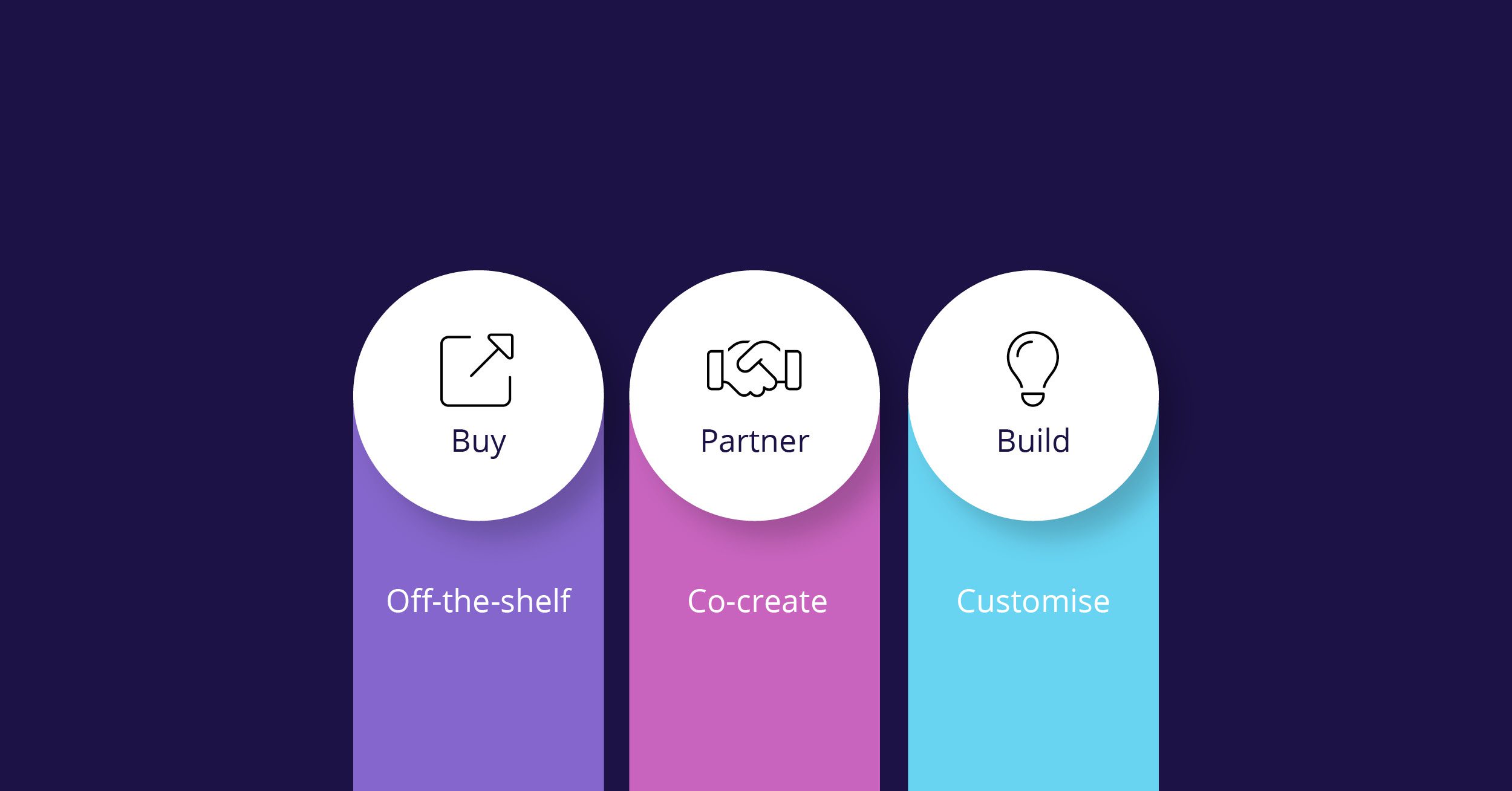The landscape is shifting. Expense is chasing Travel. Travel is chasing Expense.
And suppliers? They’re chasing each other — through mergers, acquisitions, and strategic alliances. The result? A swirl of disruption where change isn’t just likely — it’s guaranteed.
In this dynamic environment, corporate travel leaders face a strategic crossroads:
Buy. Partner. Build.
Each path reshapes who holds the levers of control, ownership, and innovation. The smart move? Be prepared, stay adaptable, and future-proof your programme.
So how do you stay ahead in a landscape that refuses to stand still?
To future-proof your travel programme, you need more than just a plan — you need a strategy that flexes with change.
Let’s dive into the approaches Travel Leaders can choose, depending on how much control they want over their travel programme. Whether you’re looking for simplicity, flexibility, or full autonomy, your options fall into three strategic models:
Buy – for those who want convenience and simple supplier management
Partner – for those who want more control and are ready to collaborate
Build – for those firmly in the driver seat, who want to architect their future

Each path, whether buying off the shelf, partnering to customise, or co-creating, comes with its own set of benefits, risks, and implications for ownership, agility, and innovation. These aren’t just internal decisions; they shape the kind of partnership you build with your Travel Management Company (TMC). Let’s unpack what that really means.
Buy

Buy – Closed Shop Model
You get a one-stop shop for services and solutions, with minimal effort needed to manage the partnership. But you’ll limit your control and may miss out on best-in-market micro-services.
Buy – Open Shop Model
Still a one-stop shop, but with access to vetted micro-services and the convenience of a single contract. However, control and ownership are still limited.
Partner

Partner – Department Store Model
You gain more control and can tap into top-tier micro-services tailored to your needs.
It takes more time and effort, and you’ll need a clear strategy to make it all work seamlessly.
Build Your Own Model

You own it all—full control and a programme built around your exact needs.
But it demands serious internal resources, a cohesive architecture, and a long-term commitment.
The Risk of Standing Still
Inaction is a decision — and a risky one.
Failing to evolve your travel programme means falling behind in a landscape where agility is currency. Whether you’re buying, partnering, or building, the cost of delay is measured in missed opportunities, inefficiencies, and strategic blind spots.
The Art of Possible
Disruption isn’t a threat — it’s an invitation.
To rethink. To redesign. To lead.
The path you choose will depend on your company’s strategy, culture, and the role your TMC plays. But it also hinges on three critical criteria:
- WILL – to create something innovative
- SKILL – in-house capability to deliver
- BILL – budget to buy or build
In a world where change is the only constant, the best travel programmes aren’t just managed, they’re designed to evolve.
So, ask yourself: Are you building for today, or architecting for tomorrow?
If this has sparked new questions, or confirmed ones you’ve been weighing, it may be time to explore what’s next. Whether you’re leaning traditional, transformational, or somewhere in between, the right sounding board makes all the difference. We’re here for that, drop us a line.



